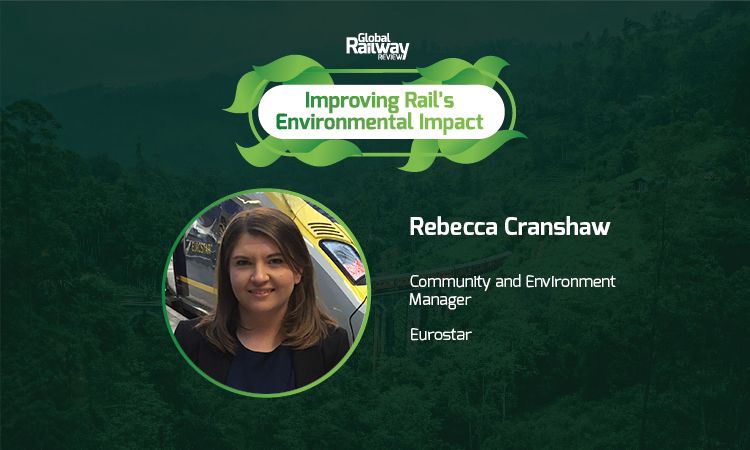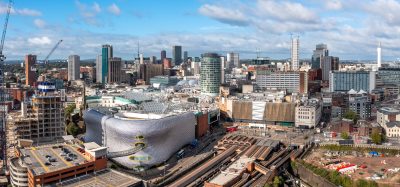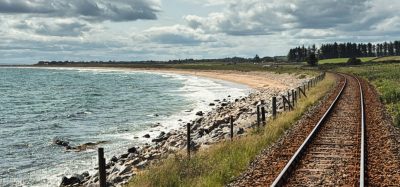Placing sustainability at the heart of Eurostar operations
Posted: 23 March 2020 | Leah Hockley - Global Railway Review | No comments yet
Within our ‘Improving Rail’s Environmental Impact’ series, Rebecca Cranshaw, Community and Environment Manager at Eurostar, discusses the company’s Tread Lightly plan and how the rail industry is witnessing a culture shift, as passengers become more focused on sustainability and allow this focus to impact their decisions.


Since beginning passenger operation in 1994, Eurostar has reached a multitude of milestones and developed its services extensively. In 2006, the company announced the launch of Tread Lightly, and the pledge that Eurostar would reduce its overall emissions by 25 per cent by 2012.
The original Tread Lightly plan worked to help the company reduce its carbon footprint, making Eurostar the greenest mode of transport between the UK and mainland Europe. However, the original plan quickly became outdated, and 2018 saw the re-launch of the plan – updated and better suited to the current European climate and culture.
Updating the Tread Lightly plan
The 2018 re-launch was a bold new science-based target working to further increase the environmentally friendly operation of Eurostar’s business.”
Eurostar’s Community and Environment Manager, Rebecca Cranshaw, was a key player in this development, and discussed the programme in more depth: “I’ve been with Eurostar for about three years now. The first project that I worked on was re-launching the Tread Lightly plan, our sustainability programme, which we re-launched at the beginning of 2018, with three main aims.”
The 10-point plan – separated into three categories: energy efficiency, reducing plastic and waste and commitment to sustainability – features an extensive range of carbon reduction initiatives. Covering operational changes, passenger participation and technological developments, the 2018 re-launch was a bold new science-based target working to further increase the environmentally friendly operation of Eurostar’s business.
Rebecca explained: “The first aim is working to improve our energy efficiency across the company. So, looking at our trains specifically, and the amount of energy they use per journey, to see how we can try to make savings to make each journey more efficient. The second objective was generally around waste – but, specifically, plastics and single-use plastics. Then, there’s our third objective for the Tread Lightly plan – our overall commitment to sustainability. So, installing electric vehicle chargers in our depot, and looking at the food that we sell on-board our trains and making sure that it’s sourced responsibly and sustainably.”
Eurostar versus single-use plastics
Within the Tread Lightly programme, Eurostar has committed to preventing waste from going to landfill and is working with its partners to achieve increased rates of recycling. By reducing waste on-board, particularly through collaboration with the company’s catering suppliers, Eurostar is aiming to reduce plastic consumption by 50 per cent by the end of 2020.
“The single-use plastic target has been quite a significant target for us; I’ve worked on it for the last two to three years and will be working on it a lot during 2020. It’s a big topic for our passengers. Obviously, being on the train, quite a lot of people will buy a bottle of water beforehand, or a coffee. So, single-use plastics are really visible to our passengers and something we’re trying to focus on a lot more, and will continue to focus on to try to reduce as much as we can.”
However, this ambitious target won’t be achieved overnight, and doesn’t come without its challenges. In order to effectively enable the reduction, there will need to be a significant shift in attitude, both for the industry and its passengers. Work will also be required to accommodate this attitude change, by adapting facilities to better suit sustainable initiatives.
One of the challenges that we’ll see, and are seeing at the moment, is how to deal with waste and recycling and the materials that are used.”
“One of the challenges that we’ll see, and are seeing at the moment, is how to deal with waste and recycling and the materials that are used,” explained Rebecca. “I think that the rail industry can put a very disposable emphasis on things, or has done so in the past, such as buying your single-use bottle of water, your single-use coffee cup. That is changing, but it’s how we make sure that we can make it easy for passengers to be able to reuse their coffee cup, to be able to wash up somewhere and reuse it again, and for the other materials used to be easily recyclable when you’re travelling between different places and different countries with different local rules on recycling. How do we make it easier to move to a more circular economy model, away from this disposable nature? I think that’s probably the most pressing challenge on my mind at the moment.”
Rebecca continued: “We’ve begun to see a lot more questions from passengers asking things like, ‘Where can I refill my water bottle?’ and, ‘Where is the water fountain within the station?’, more than we’ve ever had before. So, we are putting water fountains in all our main stations so that people are able to do this easily. It’s actually really interesting and really nice to see passengers wanting to know where they can refill bottles, if they can bring a coffee cup on-board that they can fill up themselves. It shows they want to have more information and be more informed about what their impact is, overall.”
When looking to the future, and considering the commitment that was made to reduce plastic consumption by half, Rebecca emphasised: “So far, we’ve reduced the amount of single-use plastic by 37 per cent, but there’s a little bit left to go before we achieve our 50 per cent target. We’ve also seen much higher recycling rates in St. Pancras in the last year, which is where most of our train journeys end up.” These figures prove that working to become more sustainable and seeing significant results is possible, and that there are still ways in which the industry is able to improve its environmental impact further.
A tree for every Eurostar train
We’re working with tree planting partners in each of our different countries… to plant trees over the course of 2020, and potentially for 2021 and beyond.”
As part of celebrations for its 25th anniversary, Eurostar pledged that, from 1 January 2020, a tree would be planted for every train service that is operated across its routes. By choosing to travel by high-speed rail to mainland Europe, rather than by road or air, passengers travelling with Eurostar are able to actively support the reforestation of woodland in Europe.
“This has been another initiative that I’ve been working on quite a lot,” explained Rebecca. “It’s an idea that really struck a chord with us. There’s a lot we can still do on the energy efficiency side for our train services, but we wanted to find something that was a bit tangible, that would make an overall biodiversity link to our services, and a nice topic that we could discuss with passengers. The tree for a train initiative came about through that conversation, and we just loved the idea straight away.”
With this initiative, Eurostar is expecting to plant an additional 20,000 trees in woodlands across the UK and its main European markets: “We’re working with tree planting partners in each of our different countries – the Woodland Trust in the UK, Trees for All in the Netherlands, and then Reforest’Action in France and Belgium. We are working with them to plant trees over the course of 2020, and potentially for 2021 and beyond.”
Utilising renewable energy
The development and utilisation of renewable energy is currently a significant and prominent global initiative, across all industries. As part of its Tread Lightly programme, Eurostar has committed to eliminating the use of fossil fuel energy for all of its train journeys by 2030. This is set to be achieved by significant investment into renewable energy at the company’s UK depot, which is Eurostar’s biggest industrial facility with a substantial carbon footprint.
It’s how we now have to work, moving away from the fossil fuel-based old technologies and moving to something new.”
“We’re working hard to make each journey as efficient as it can be, by using different systems on-board with the drivers, and eco-efficient driving to try to improve the energy efficiency of each journey,” explained Rebecca. “We’ll also be moving to 100 per cent renewable energy by 2030. There are a lot of industries, and this isn’t specific to rail, that are looking at their energy sourcing. A lot of companies are trying to do similar things, and it’s how we now have to work, moving away from the fossil fuel-based old technologies and moving to something new.”
Operating across different countries presents a particularly unique challenge, requiring collaboration between all relevant parties in order to effectively deliver Eurostar’s commitments. This can, essentially, slow down the process, as the company is restricted by how much it can do without relying on a separate party.
Rebecca said: “We’re working really closely with our infrastructure partners to look at all the different options for renewable energy. Because we operate on different tracks in different countries, it’s not always directly a decision for us to make. We’re working really closely with SNCF in France and HS1 in the UK to look at what the options might be. So, nothing to say yet, but hopefully soon.”
Witnessing a culture shift
We’ve all seen a seismic change in people’s priorities.”
It is common knowledge across all transport industries, but particularly rail, that travellers are becoming more aware of the environmental impact of their journeys and are adapting their chosen mode of travel depending on how sustainable it is.
“In the last few years, the landscape of sustainability has changed hugely,” said Rebecca. “We’ve all seen a seismic change in people’s priorities. What passengers want from rail changes all the time, but I think what we’re trying to do is ensure that people have enough information about what we’re doing as a rail company – that we’re not resting on our laurels of already being a sustainable travel service, but that we’re trying to push ourselves to achieve more. We have set ourselves quite difficult targets, but targets that we’re working hard to achieve.”
Travelling by rail is, indisputably, the most sustainable travel option – Eurostar estimates that its train journeys produce between 80 and 90 per cent fewer emissions than the equivalent short haul flight. However, relying on these figures would be irresponsible, especially as other transport modes work to become more sustainable.
It’s something that we should be working on as an industry, to push ourselves even further in becoming more sustainable, to provide the kind of solution that people are looking for.”
Rebecca concluded: “The rail industry has sort of a legacy – we’re already a sustainable transport mode, so there’s already a lot of great sustainability work going on within the rail industry. It’s a much more sustainable method of transport than taking a car or a plane. But there’s a lot that we can do to enhance and build on that, I think, given the current global situation with climate change and global warming and the amount of waste being produced. No-one can ignore it anymore – it’s something that we should be working on as an industry, to push ourselves even further in becoming more sustainable, to provide the kind of solution that people are looking for.”
If you would like to take part in our Improving Rail’s Environmental Impact series, please email: Craig Waters, Editor, Global Railway Review.
OUT NOW: The Definitive Guide to Rail’s Digital Future
The rail industry is undergoing a digital revolution, and you need to be ready. We have released our latest market report, “Track Insight: Digitalisation.”
This is not just another report; it’s your comprehensive guide to understanding and leveraging the profound technological shifts reshaping our industry. We move beyond the buzzwords to show you the tangible realities of AI, IoT, and advanced data analytics in rail.
Discover how to:
- Optimise operations and maintenance with real-time insights.
- Enhance passenger services through seamless, high-speed connectivity.
- Leverage technologies like LEO satellites to improve safety and efficiency.
Featuring expert analysis from leaders at Nomad Digital, Lucchini RS, Bentley Systems and more, this is a must-read for any rail professional.
Related organisations
Eurostar, ReforestAction, SNCF, Trees for All, Woodland Trust







